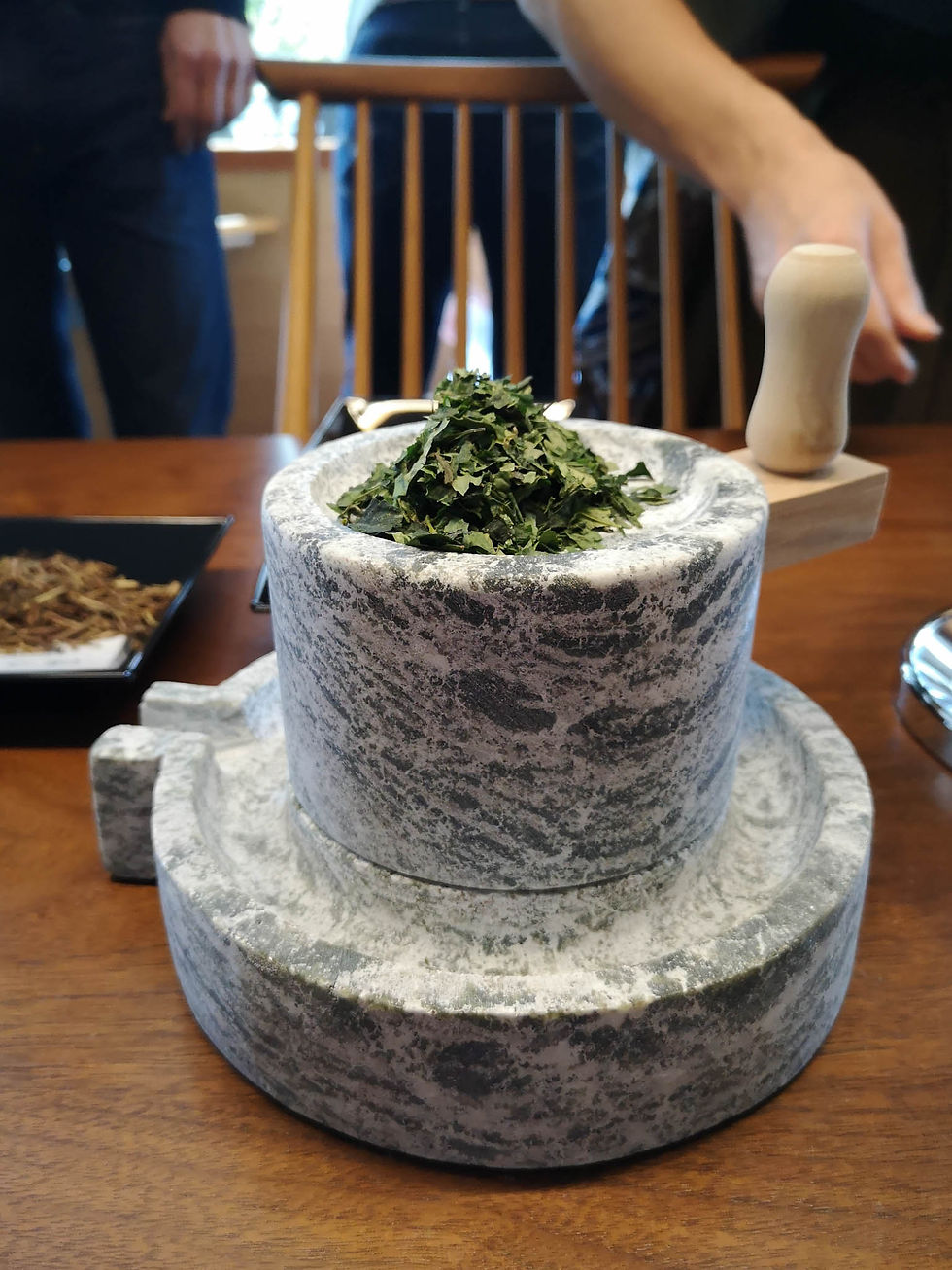
For western people, Japanese tea ceremonies are foreign, appealing and partly frightening attractions. Embedded in tradition and rules, they seem to unfold and simultaneously express the unintelligibility of the Japanese spirit. Being able to enjoy the atmosphere may take a few sessions ; being able to feel and understand its spirit, years if not decades.
Experiencing Chado* at kokoka* is a wonderful way to learn and participate in an act which is part of the treasure of Japanese culture and tradition.
Rather than watching the performance of a master, trainees are practicing in front of you. On a lucky day, one might even participate. This set provides a wonderful opportunity to ask questions and to learn through your eyes what it takes to get it right.
If you previously participated in a tea ceremony, you quickly become aware, when watching novices, how much practice it takes to perform the right movements. Without perfected harmonious gestures, which appear naturally and smooth, the whole experience brakes apart. A tea ceremony is actually a dance with objects and hands performed in space.
The plus about watching trainees is that movements are performed more than once. It gives you, as the observer, time to follow and analyse the steps. This is obviously not the intention, but it turns out to be quite helpful to understand and learn about these artistic rituals.
Before preparing the tea, a cleaning choreography is performed. The (Tsukai) Fukusa* - 袱紗, also written 帛紗 or 服紗 – is folded and used to gently purify the tea utensils. The complexity of handling and especially folding the Fukusa, requires a rigorous practice. It is, to me, the most impressive act.
Impossible to describe with words, they combine a dance of the hand with origami like folding techniques, which finally engages into a dialogue with the objects.
The cleaning ritual of the tea bowls is done with a Chakin - a white rectangular linen or hemp cloth. With graceful movements every bowl is wiped very carefully in full consciousness before serving the tea. The movements are very pleasant to watch and one can see and feel the gratefulness towards each objects, expressed in the act of caring.
Most people unfamiliar with tea ceremonies are probably foreign to the essence, importance and meaning of cleaning found in this performance. As an essential part of the experience of Chado, it however reveals the importance and value of cleaning in Japanese culture - an appreciation of a simple but jet so complex and significant act.
*Chado: the way of tea
*kokoka: Kyoto International Community Center
*Fukusa: a square of silk, usually undecorated, deep purple for men and red/orange for woman
*Obi: a sash of the traditional Japanese dress
